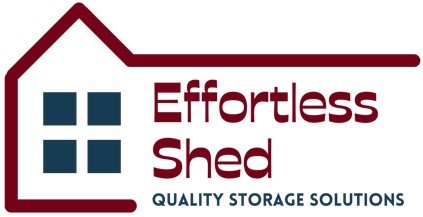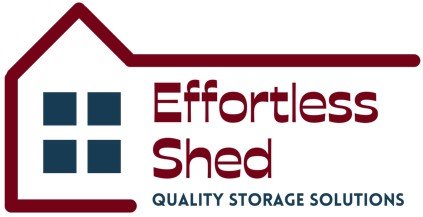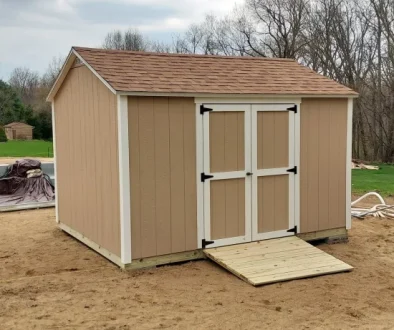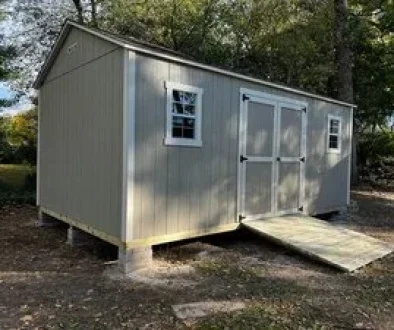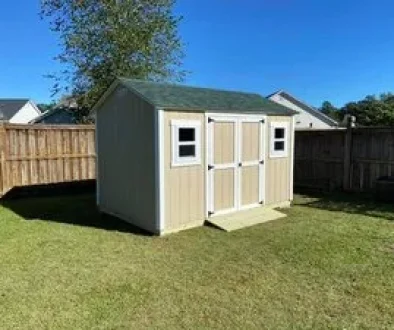What Size Shed Can You Build Without Planning Permission in Michigan?
Many homeowners in Michigan consider adding a shed to their property for extra storage or workspace. It’s a practical and cost-effective solution, but one that often raises questions about what permits are needed before building. One of the most common questions is how big a shed can be without needing planning permission.
Understanding the rules around sheds is important because Michigan follows both state-level building codes and local zoning regulations. These rules can vary depending on your city, township, or county, so knowing the limits can save time, money, and the hassle of dealing with potential fines or forced removals.
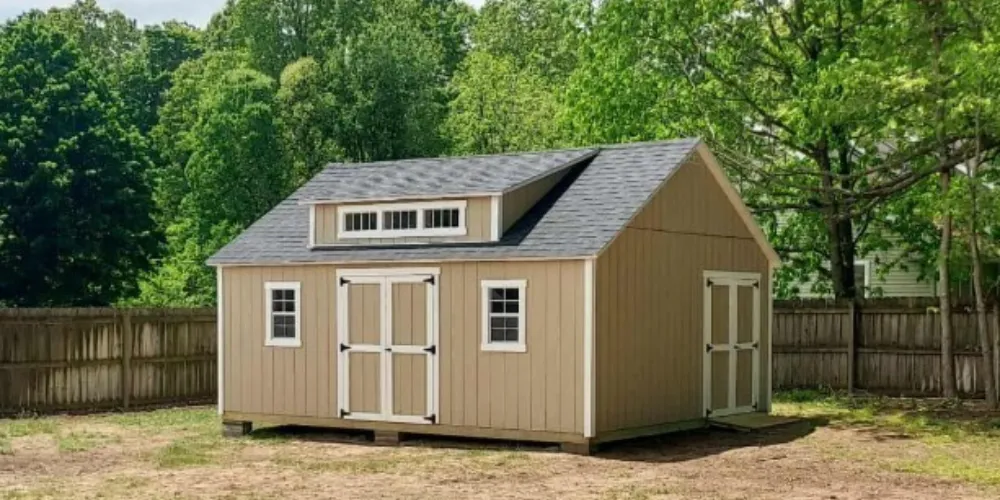
In Michigan, the term “planning permission” typically refers to two types of approvals: a building permit and a zoning or land use permit. A building permit focuses on construction safety and code compliance, while a zoning permit makes sure the shed location and use align with local land use rules, such as property line setbacks, height limits, and lot coverage. Even if a building permit is not required, zoning approval is often still needed to legally place a shed on your property.
When You Don’t Need Shed Building Permit in Michigan?
In Michigan, a building permit is not required for a detached shed that is 200 square feet or smaller. This is a statewide guideline based on the Michigan Residential Code. It applies to structures that are used for storage and are not attached to any other building.
Common examples of shed sizes that fall under this limit include 10×20 feet, 12×16 feet, 8×24 feet, and similar combinations. As long as the total floor area stays at or below 200 square feet, a building permit is generally not needed.
However, the structure must also be single-story. Adding a loft or second level for any reason may push the project into a category that requires permitting. The height of the shed can also be a factor depending on local zoning rules. Some municipalities have height restrictions even for permit-exempt sheds, so checking local ordinances is always recommended.
Some Shed Usage Restrictions:
Permit-free sheds must be used strictly for storage. This includes storing lawn equipment, tools, bicycles, seasonal items, or similar personal property. The shed cannot be used as a workshop, home office, living space, or tiny home. Any use that changes the nature of the structure from storage to occupancy may require full permitting and inspections.
In addition, the shed cannot have utilities such as electricity, plumbing, or HVAC systems. Installing any of these features would require separate permits and inspections, even if the shed itself is under the 200 square foot limit. Keeping the shed simple and unconnected to any utility systems is essential for maintaining exemption from building permits.
Michigan has a statewide shed size exemption, but local rules can vary by city or township. The table below highlights permit requirements, zoning needs, and other key rules in specific locations to help you plan your shed project with confidence and avoid issues related to placement, size, or compliance.
| Location | Permit Required Over | Zoning Approval | Max Height | Note |
|---|---|---|---|---|
| Ann Arbor | 200 sq ft | Yes | 12–14 ft | One shed per parcel |
| East Lansing | 200 sq ft | Yes | Set by district | Must meet placement rules |
| Muskegon | 200 sq ft (res.) / 120 (comm.) | Yes | 14 ft | One shed per lot; 3 ft min setback |
| Hamburg Township | 200 sq ft | Yes | 10 ft | Max one shed; 5 ft min setbacks |
| Kalamazoo Township | 200 sq ft | Yes | Varies by zoning district | Follow local and lot coverage rules |
| Grand Ledge | 200 sq ft (res.) / 120 (comm.) | Yes | Local limits apply | Permit needed if over limit |
| All Other Locations | 200 sq ft | Yes | 10–14 ft | Confirm setbacks, height, and lot coverage locally |
What Else You Still Need (Even If Exempt from Permit)
Even if your shed meets the size limit for a building permit exemption, that doesn’t mean you are free to build without any checks. Local zoning rules and private community restrictions still apply. Taking time to confirm these requirements helps you avoid costly mistakes or compliance issues after construction.
1) Zoning Review or Land Use Permit
Even if a shed does not require a building permit under Michigan’s statewide 200 square foot rule, most local municipalities still require zoning approval. This is commonly referred to as a zoning permit or land use permit and applies to both permanent and temporary structures. Local zoning departments evaluate several key factors including:
- Setbacks: The required distance between the shed and property lines, fences, or other structures. This can vary by zoning district.
- Height: Maximum allowed height from grade to roof peak. Some areas limit sheds to a certain height even if no building permit is required.
- Placement: The location of the shed on the lot, especially near easements, wetlands, or right-of-way areas.
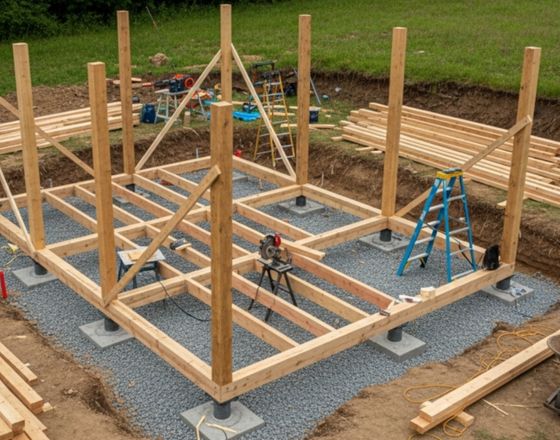
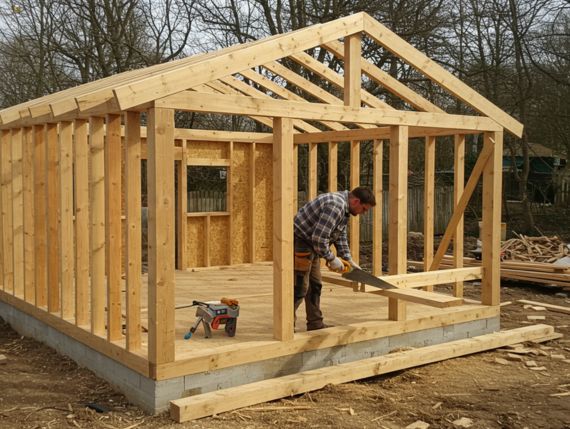
2) HOA and Subdivision Rules
In addition to city or township regulations, many properties are located in subdivisions governed by a Homeowners Association (HOA) or similar entity. These private organizations often have their own set of rules for exterior structures.
HOA or subdivision may limit shed size, height, materials, colors, or even prohibit sheds entirely. Their restrictions can be more strict than local codes and are enforced through covenants, conditions, and restrictions (CC&Rs) tied to your deed.
Before starting the shed project, it is important to review your HOA guidelines or subdivision covenants otherwise you may face shed removal and fines. Effortless Shed has been working on shed construction in Michigan from more than a decade. If you need any kind of help related to shed size or regulations, you can connect with our team for free of consultation.
When Do You Need a Permit For Shed Building in Michigan?
You will need a building permit in Michigan if your shed or structure meets any of the following conditions:
- It is larger than 200 square feet in floor area, regardless of use or design.
- It includes electrical, plumbing, or mechanical systems, even if the shed itself is small. Permits for these systems are always required.
- You are building multiple sheds or garages on the same property. Most municipalities allow only one accessory storage structure without review.
- The shed will be used for residential or commercial purposes, such as living space, a home office, a workshop, or retail storage.
- It is located near regulated areas like wetlands, lakes, rivers, or flood zones. These areas often require additional review, permits, or environmental clearances.
Other Rules You Might Over Look
Apart from permits and zoning approvals, several other rules can affect where and how you build your shed. These are often missed but can lead to violations if not followed:
1- Setbacks From Property Lines:
Most municipalities in Michigan require sheds to be placed a certain distance from side, rear, and sometimes front property lines. Typical minimum setbacks range from 3 to 10 feet, depending on the zoning district and whether the structure is adjacent to a house, fence, or utility easement. These rules help maintain spacing between buildings for access, fire safety, and property rights.
2- Lot Coverage Limits for Accessory Structures:
Zoning codes often restrict how much of your total lot can be occupied by buildings, including your home, garage, shed, and decks. This is referred to as lot coverage. The percentage allowed varies by zoning category but often falls between 25% and 35%. Adding a shed might push your total over the allowed limit, requiring special approval.
3- Maximum Shed Height Allowed by Local Zoning
Even small sheds must comply with local height restrictions. These limits help protect sightlines and prevent oversized buildings in residential areas. Height is typically measured from the average grade to the roof peak. Many townships set a maximum height between 10 and 14 feet for accessory structures. Exceeding this may require a variance or design adjustment.
4- Drainage, Grading, and Rain water Runoff Requirements:
Improper shed placement can cause water to pool or drain toward neighboring properties, which can lead to erosion, flooding, or complaints. Some municipalities have specific grading requirements or recommend installing gutters, splash blocks, or permeable foundations. It’s important to evaluate how your shed affects water flow across your yard, especially during heavy rain.
Pro Tips For Building Complaint and Permit Free Shed in Michigan
- Keep your shed at or below 200 square feet to meet the exemption limit. Measure carefully, including overhangs and exterior walls.
- Contact your city or township or an expert shed builder to confirm setback, placement, and height requirements. Zoning rules apply even if a building permit is not needed.
- Keep the shed height within local limits, typically between 10 and 14 feet. Taller sheds may require approval or a zoning variance.
- Choose gravel, concrete blocks, or treated skids instead of a full concrete slab to help maintain permit-free classification.
- Avoid installing electrical, plumbing, or heating systems. These features always require permits, even in small or temporary structures.
- Build on a spot where water drains away naturally to prevent flooding and erosion. Use gravel or minor grading if needed.
- Most zoning rules allow only one accessory storage structure. Adding more may require approval or affect lot coverage limits.
- Review your deed or contact your HOA for any restrictions on shed size, materials, or placement before building.
- Save zoning confirmations, sketches, and site plans in case of future questions or inspections from local authorities.
